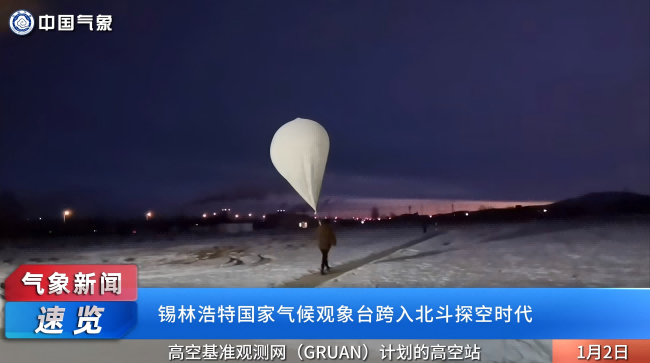At 7.15am local time on January 1, a balloon carrying a Beidou satellite navigation sounding device was launched at the Xilinhot Upper-air Observatory in Inner Mongolia, China, with the first set of sounding data received 30 minutes later.
The data was uploaded to the meteorological big data cloud platform ‘Tianqing’ for domestic meteorological operational use and marked the official start of the Beidou sounding operation by the observatory to obtain local long-term, continuous and stable vertical atmospheric data.
“It is the first time that Beidou sounding operational data has been applied to upper-air baseline climate observation,” said Guo Qiyun, deputy director of the base room of China Meteorological Administration (CMA) Meteorological Observation Centre (MOC).
The Global Climate Observing System (GCOS) upper-air base observing network site map shows more than 30 sites scattered across five continents and seven oceans, of which only four are in Asia. The Xilinhot observatory is the only GCOS upper-air baseline climate observatory in north-central Asia and the only one on the Chinese mainland. It is located in China’s northern grasslands and on the transit path of cold air, which is a key node in the study of climate change and the impacts of human activities in the typical climatic zone of semi-arid continental areas in the mesothermal temperate zone.
“Carrying out upper-air baseline climate observations here can provide validation tests for remote sensing observation methods such as Fengyun meteorological satellites and provide constraints on the quality of global vertical observation networks and gridded forecast data,” confirmed Kang Li, director of the office of observations and networks of the Inner Mongolia Autonomous Region Meteorological Service.



